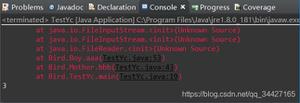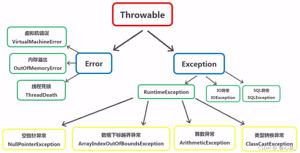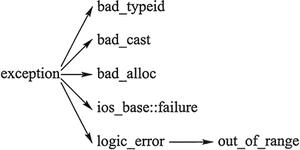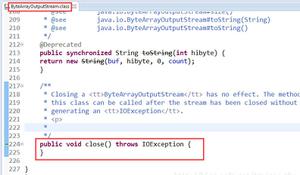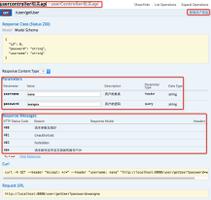如何使用try catch进行异常处理是最佳实践
在维护甚至声称自己是高级开发人员的同事的代码的同时,我经常看到以下代码:
try{
//do something
}
{
//Do nothing
}
或者有时他们将日志记录信息写入日志文件,例如以下代码try catch块
try{
//do some work
}
catch(Exception exception)
{
WriteException2LogFile(exception);
}
我只是想知道他们所做的是最佳做法吗?这让我感到困惑,因为在我的思考中,用户应该知道系统会发生什么。
请给我一些建议。
回答:
我的异常处理策略是:
要通过钩住捕获
Application.ThreadException event,然后决定:- 对于UI应用程序:使用道歉消息将其弹出给用户(winforms)
- 对于服务或控制台应用程序:将其记录到文件(服务或控制台)中
然后,我总是将 都包含在try/catch:
- Winforms基础结构触发的所有事件(加载,单击,SelectedChanged …)
- 第三方组件触发的所有事件
然后我附上“ try / catch”
- 所有 (IO操作,潜在的零除法计算…)。在这种情况下,我会抛出一个新事件
ApplicationException("custom message", innerException)来跟踪实际发生的情况
另外,我会尽力 进行 。有以下例外情况:
- 需要立即向用户显示
- 需要一些额外的处理,以便在事情发生时将它们放在一起,以避免级联问题(即:
finally在TreeView填充过程中将.EndUpdate放在该部分中) 用户不在乎,但重要的是要知道发生了什么。所以我总是记录它们:
- 在事件日志中
- 或磁盘上的.log文件中
应用程序顶级错误处理程序中的 是一个好习惯。
我也强迫自己尝试:
- 请记住, 。不必将异常处理程序放在各处。
- 可重用或深度调用的函数不需要显示或记录异常:它们要么自动冒泡,要么在我的异常处理程序中随一些自定义消息重新抛出。
所以最后:
坏:
// DON'T DO THIS, ITS BADtry
{
...
}
catch
{
// only air...
}
无用:
// DONT'T DO THIS, ITS USELESStry
{
...
}
catch(Exception ex)
{
throw ex;
}
最终尝试而没有抓住是完全有效的:
try{
listView1.BeginUpdate();
// If an exception occurs in the following code, then the finally will be executed
// and the exception will be thrown
...
}
finally
{
// I WANT THIS CODE TO RUN EVENTUALLY REGARDLESS AN EXCEPTION OCCURED OR NOT
listView1.EndUpdate();
}
我在最高层的工作:
// i.e When the user clicks on a buttontry
{
...
}
catch(Exception ex)
{
ex.Log(); // Log exception
-- OR --
ex.Log().Display(); // Log exception, then show it to the user with apologies...
}
我在一些所谓的函数中所做的事情:
// Calculation moduletry
{
...
}
catch(Exception ex)
{
// Add useful information to the exception
throw new ApplicationException("Something wrong happened in the calculation module :", ex);
}
// IO module
try
{
...
}
catch(Exception ex)
{
throw new ApplicationException(string.Format("I cannot write the file {0} to {1}", fileName, directoryName), ex);
}
异常处理(自定义异常)有很多工作要做,但是我尝试记住的那些规则对于我做的简单应用程序已经足够了。
这是扩展方法的示例,用于轻松处理捕获的异常。它们以一种可以链接在一起的方式实现,并且很容易添加您自己捕获的异常处理。
// Usage:try
{
// boom
}
catch(Exception ex)
{
// Only log exception
ex.Log();
-- OR --
// Only display exception
ex.Display();
-- OR --
// Log, then display exception
ex.Log().Display();
-- OR --
// Add some user-friendly message to an exception
new ApplicationException("Unable to calculate !", ex).Log().Display();
}
// Extension methods
internal static Exception Log(this Exception ex)
{
File.AppendAllText("CaughtExceptions" + DateTime.Now.ToString("yyyy-MM-dd") + ".log", DateTime.Now.ToString("HH:mm:ss") + ": " + ex.Message + "\n" + ex.ToString() + "\n");
return ex;
}
internal static Exception Display(this Exception ex, string msg = null, MessageBoxImage img = MessageBoxImage.Error)
{
MessageBox.Show(msg ?? ex.Message, "", MessageBoxButton.OK, img);
return ex;
}
以上是 如何使用try catch进行异常处理是最佳实践 的全部内容, 来源链接: utcz.com/qa/421926.html

